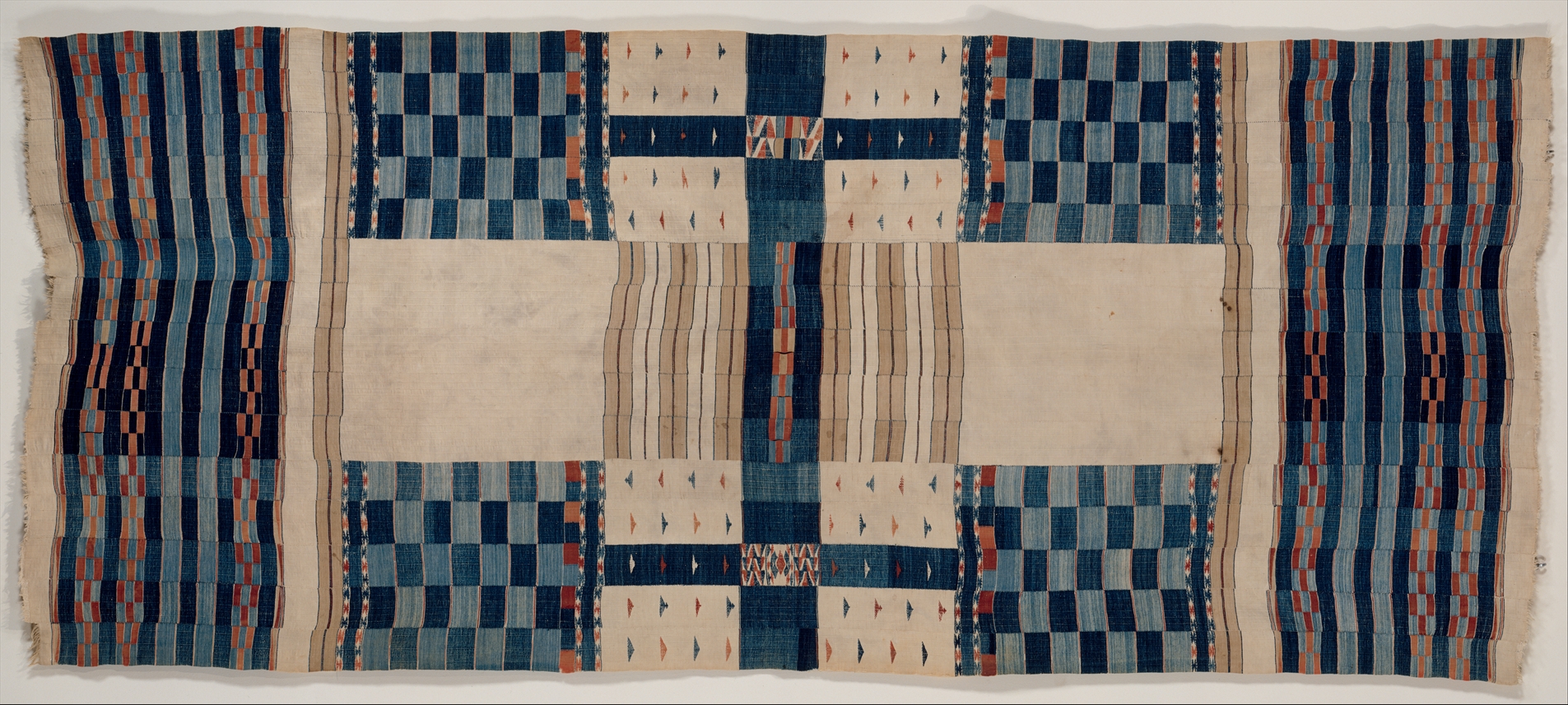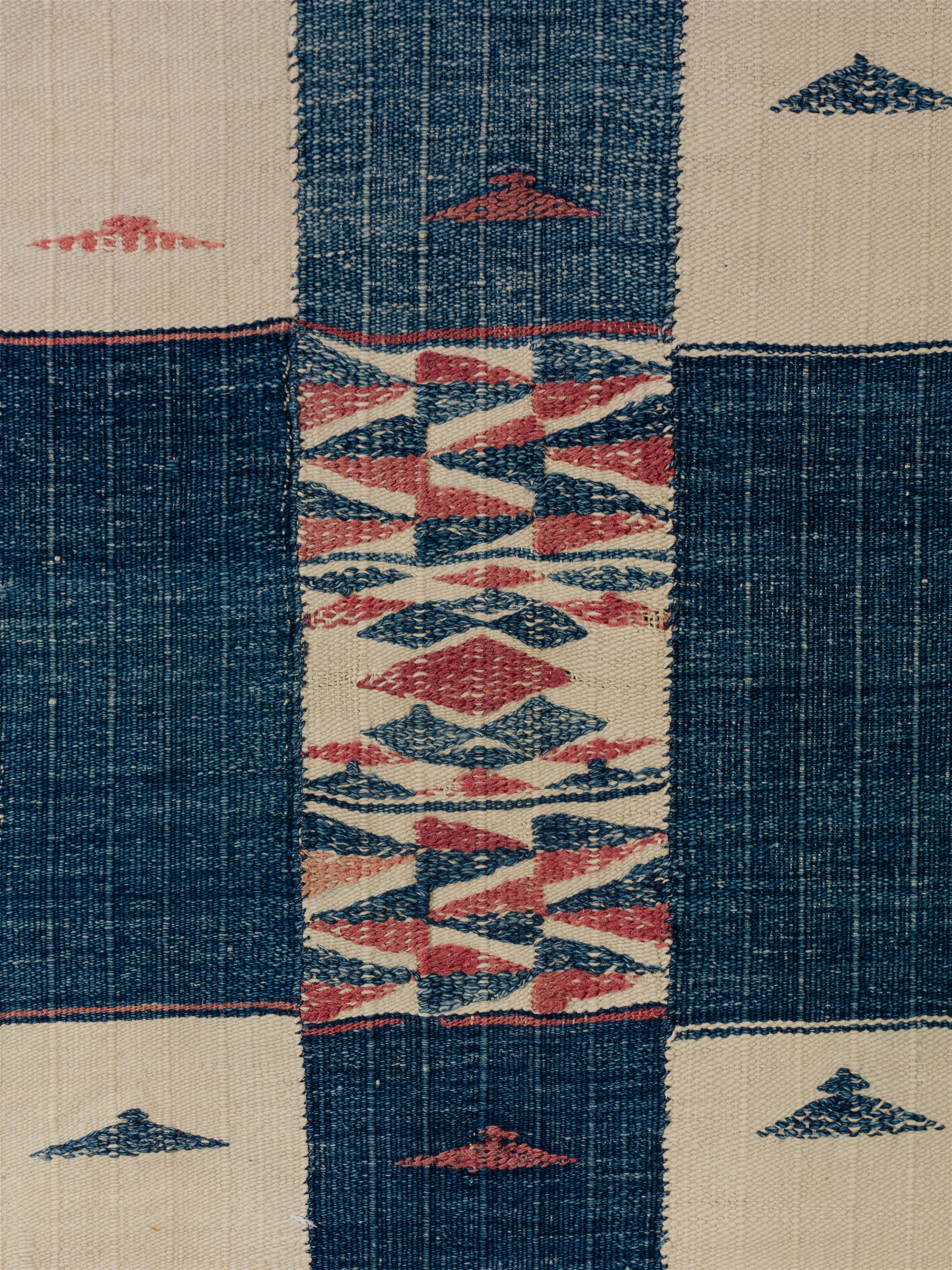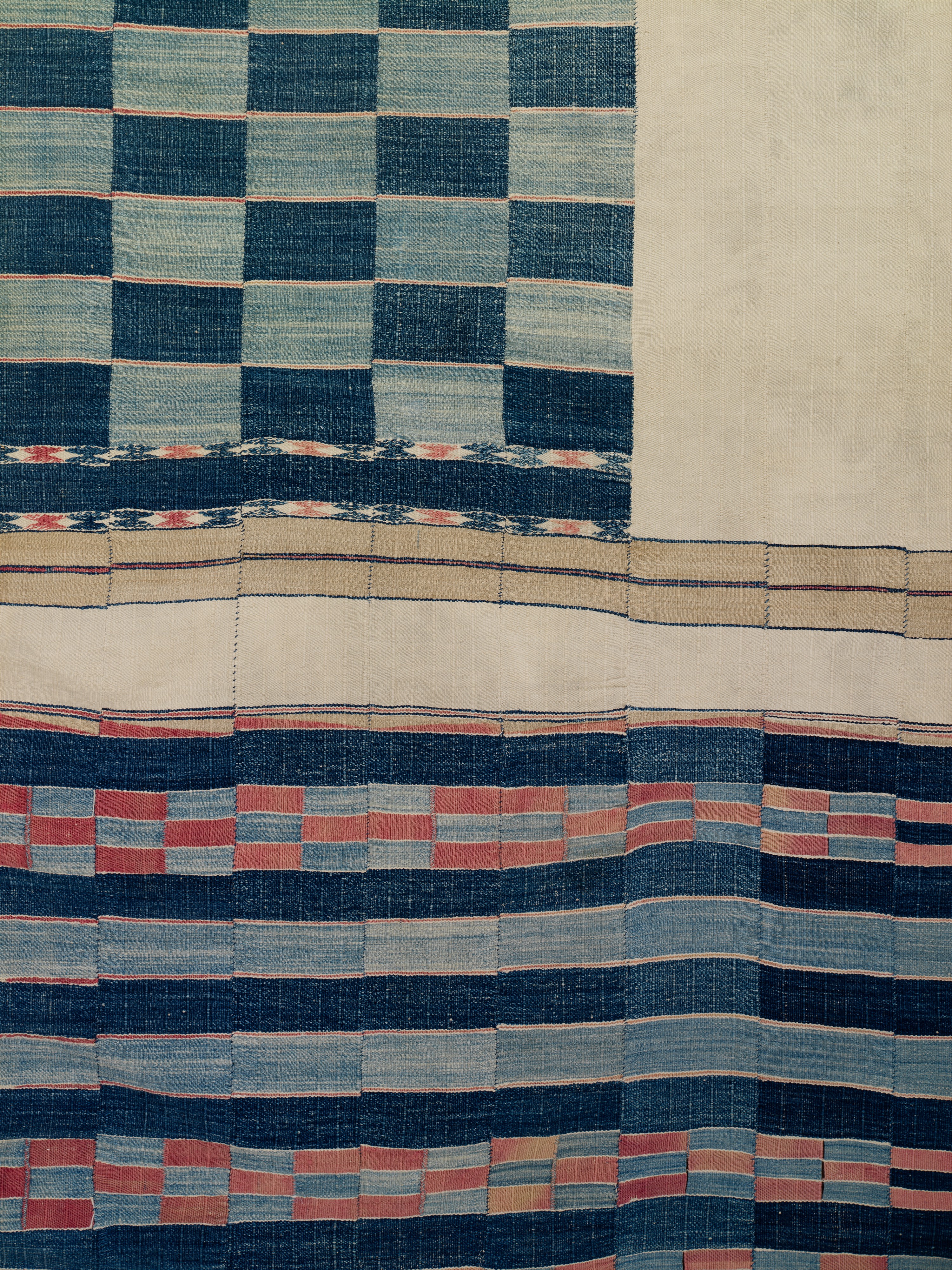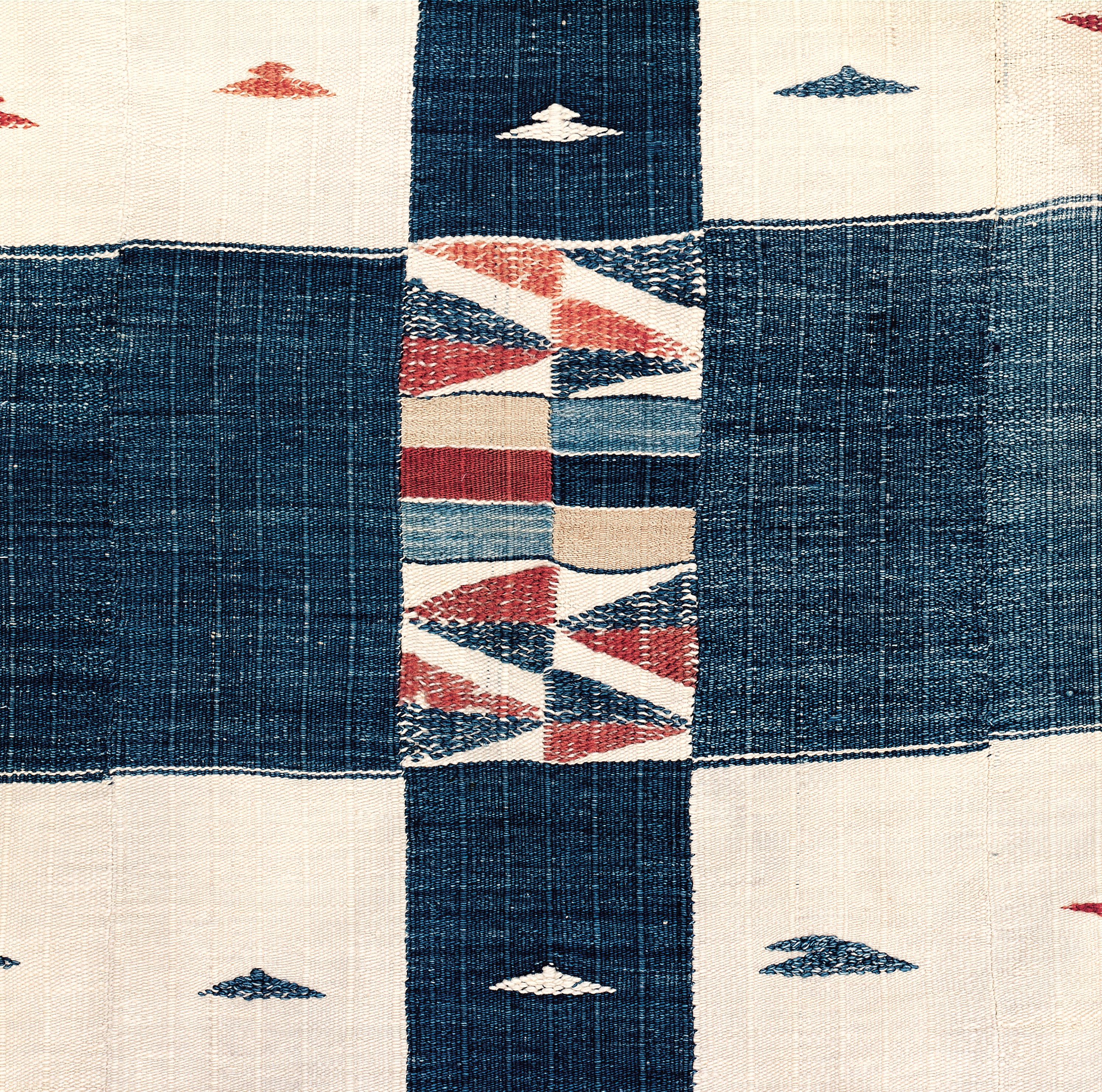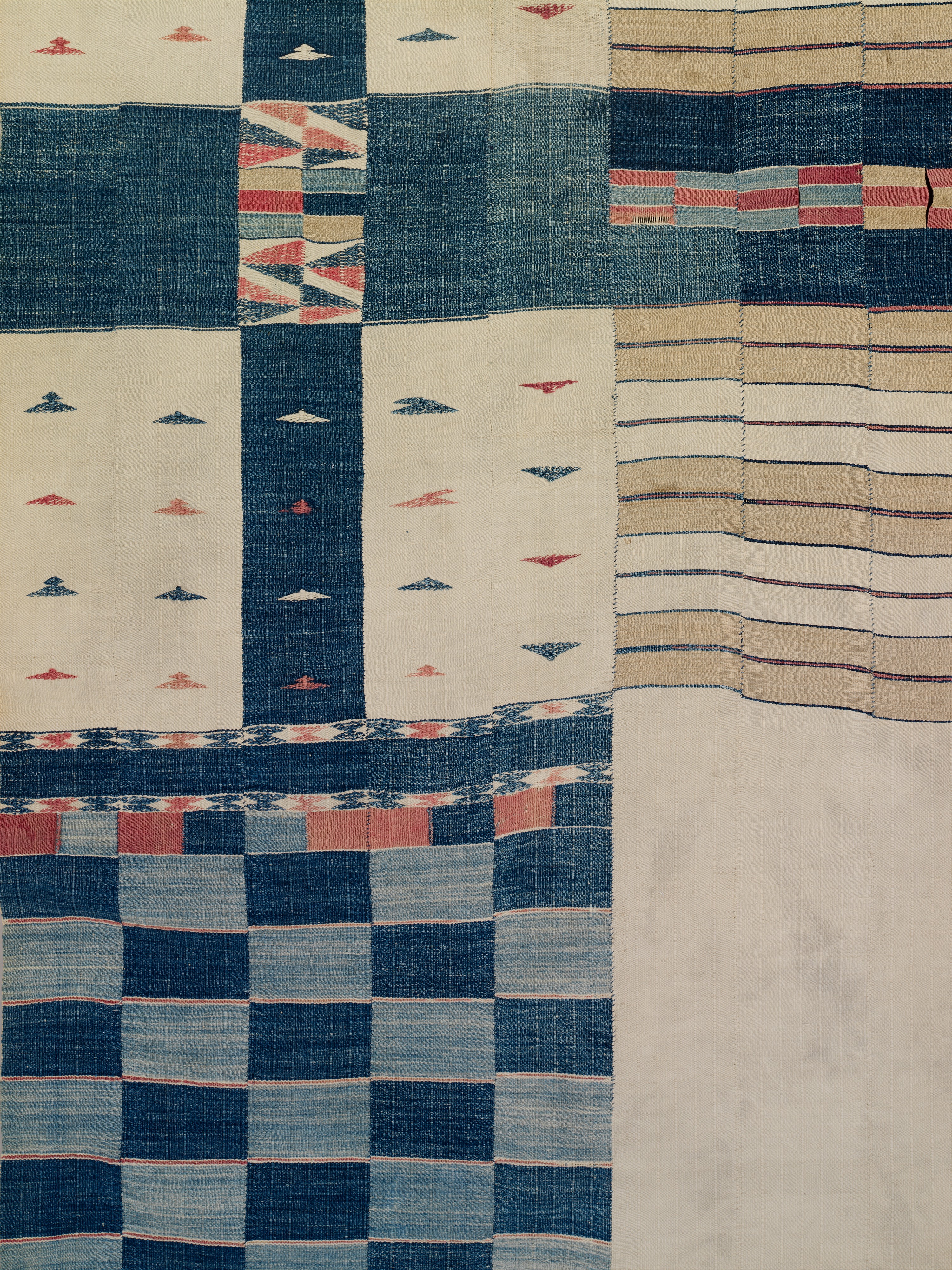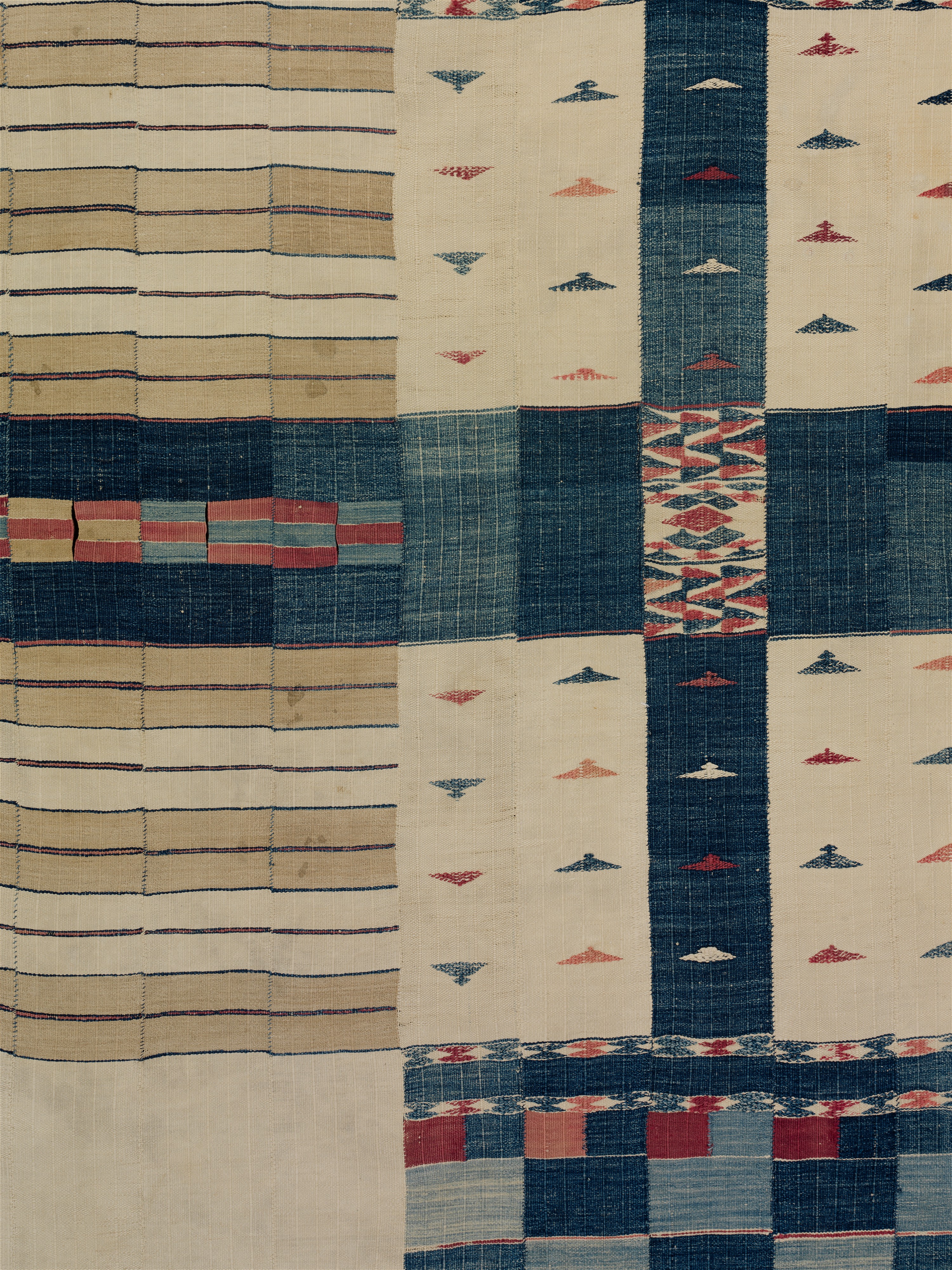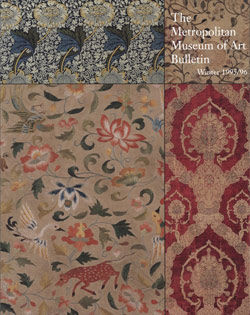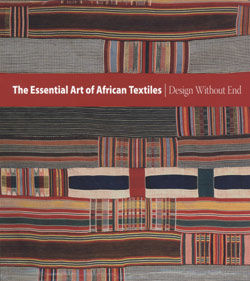Interior Hanging
Not on view
Large-scale textiles created south of the Sahara were generally intended as enhancements for domestic environments. The principal type of textile produced by Fulani weavers was a blanket woven of hand-spun sheep's wool, known as khasa, that primarily functioned to enclose and define a space for personal use. The present rare work is far more elaborate and ambitious than most in that genre, and its place of origin has not been possible to determine in the absence of documentation. indeed, although purchased in the 1870s in Ghana by Joseph Upton, a Boston merchant, it does not resemble cloth produced there. It most closely resembles textiles of the Fulani, who live along the bend of the Niger River; however, it also shares affinities with textiles of the Mende and Temne of Sierra Leone. Woven principally of cotton and in narrow strips, it has features that suggest relationships to both cotton- and wool-weaving traditions. So complex and refined a textile must have been commissioned by a chiefly patron, perhaps to serve as a spectacular hanging.
Composed of fifteen strips each about 3 ½ inches wide that extend its entire length, the blanket was designed to be hung horizontally. Executed by a master weaver, it has an intricate composition that is symmetrical and carefully balanced. Its subtle palette is made up of hand-spun yarns: white, three shades of indigo, and ecru cotton, along with pink wool. A bold median band spans the center, and broad striped borders accentuate both ends. Between these the field is subdivided into nine rectangular units, of which the four outer ones are filled with a checkerboard design. The others, in light colors, suggest a negative space whose cruciform shape is echoed by the narrow, linear elements that cross it. Smaller patterns were created within the individual strips by juxtaposing rectangular and triangular color blocks, some accomplished by supplementary-weft patterning and some by tapestry weave, in which a colored weft yarn is worked back and forth in a limited area.
Once it was woven according to the preplanned design, the length of the fabric was cut into the strips that were assembled to produce this complex expanse of checkerboard blocks, bands, and crosses. The alternation of dense graphic elaboration and lighter passages allows the composition to breathe and gives it a sense of openness. The checkerboard, a basic West African composition, ultimately may derive from Islamic influences. Inscribed "magic squares" carry mystical significance in Islam, and the orderly cosmos is often symbolized by an arrangement of squares emanating from a central point.
Due to rights restrictions, this image cannot be enlarged, viewed at full screen, or downloaded.
This artwork is meant to be viewed from right to left. Scroll left to view more.


